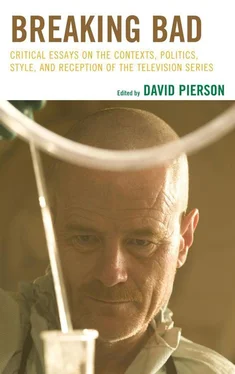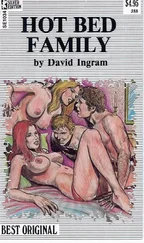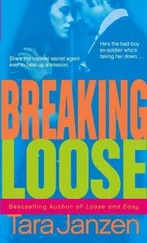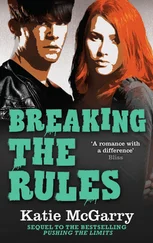Krazy-8’s death, the disastrous attempt to dissolve the body of Jesse’s ex-partner Emilio, and the strong, fish-like odor given off by methylamine as it is processed fundamentally change Jesse’s home, and what started in the basement has moved into the main areas of the house. This most intimate of places is corrupted, and the taint cannot be contained within the basement/unconscious. The damage to the house, combined with lingering odors, make it unsalable, and leaves Jesse’s home partially destroyed. The memories of his aunt and his life before Walt are being subsumed by these new events which drastically alter Jesse’s experience of place in his own home.
These events cannot be erased, and become part of the history of Jesse’s home. Indeed, the show reinforces these memories as the series progresses. In the season one finale “A No-Rough-Stuff-Type Deal” (03/09/08), the camera lingers on the sun-lit, empty, support-pole in Jesse’s basement—the site of Krazy-8’s death. Later, in season two’s “Down” (03/09/09), Jesse’s scooter is stolen, despite having been secured by the steel U-lock which he and Walt had placed around Krazy-8’s neck. In each case the viewer is immediately reminded of what happened in Jesse’s basement without need of any further exposition beyond the camera’s focus. Moreover, the lab which Jesse and Walt set up in the basement is the immediate cause of Jesse’s eviction by his parents in season two, when his mother discovers it. This reinforcement serves to keep the memory of these events in the basement alive, and to imbue the place itself with a history and meaning that go beyond the diegetic world of the series to become part of the audience’s experiential history of that place, and a kind of social memory. Basements thus become a place of death and danger for both the characters and the viewer.
For Jesse, much of the history contained in his home, both that which occurred off-screen (Jesse and his aunt) and that which the viewer has witnessed (Krazy-8, Emilio, etc.) is partially concealed when Jesse’s parents repossess his house and extensively remodel it for later sale in season two. By the time Jesse purchases the house through the efforts of his lawyer Saul Goodman, all traces of him, his aunt, and even his misadventures with Walt have been removed, including furniture, keepsakes, art, appliances, and countertops. Even the walls have been uniformly painted rental white. To everyone but Jesse (and perhaps Walt), the house on Margo Street is no longer a place, but an empty space.
Moving into these spaces, however, humans begin what Edward Relph (1976) calls “the largely unself-conscious intentionality that defines places as profound centers of human existence” (43). In the case of living spaces, even at the bare minimum we usually bring with us clothing and a toothbrush. These articles are generally viewed as private possessions, as being “ours,” and in storing these belonging in a new space, the process of changing that space into a place, into our place, is begun. Jesse goes through this process twice in the course of the series. First, when he moves in to the duplex apartment next to Jane Margolis in season two, and again after Jane’s death when he moves back into the house on Margo Street in season three. At first, Jesse’s sole possessions are some clothes, a sleeping bag, and very little else .Later, some minimal furniture appears: a futon couch, a glass-topped coffee table, and a beanbag chair. Jesse is claiming the space, but is apparently resisting making it into a truly intimate place.
This is because, during season three, Jesse is largely out of place, and resistant to the idea of having a home, a place in the world where he belongs. Tim Cresswell (1996) links being “out of place” with having stepped out of accepted boundaries, crossing what is “often a geographical line and a socio-cultural one” (103). Taken in concert with Yi-Fu Tuan’s (1991) view that “home, insofar as it is an intimately lived in place, is imbued with moral meaning,” this helps to explain Jesse’s seemingly indifferent attitude to his house in season three (105). In redefining himself as “the bad guy” (“No Mas” 03/21/10), Jesse believes he has crossed a socio-cultural line. By basically blackmailing his parents into selling him the house at a price well below its value, he has transgressed geographically. Most damning of all in Jesse’s eyes is Jane’s death, for which he holds himself responsible. This final transgression makes Jesse feel that he is unworthy of a home in Tuan’s sense of a morally meaningful place.
Season three also marks a change in the way in which Jesse’s home is portrayed in the series. In part this is due to the sale of the actual house used as the set for 9809 Margo Street in seasons one and two, necessitating its replacement by a carefully constructed studio set (Slovis 2012). This set includes only the living room, dividing wall, short hallway and the stairs leading up to the second floor. Viewed in terms of humanist geography, circumscribing the audience-visible narrative to this particular place is highly significant. Relph (1964) notes that traditionally, living rooms have been thought of as “deeply private place[s]… truly the center of both family and individual life” (36). In the modern United States, the living room can be read as a region of overlap for private, social, and public spaces. The living room is definitely an inside place, separated from the wider world outside, and remains the room in which many people spend the majority of their time at home. It is also a kind of liminal space and interface between the private and the social. When we have guests into our homes it is the living room which usually becomes the main social area. Certainly, this is true for Jesse in seasons one through five.
In Jesse’s house, the primary passage from outside to inside, and vice versa, is the door separating his living room from the front porch. The living room thus becomes particularly vulnerable to incursions from the outside world, including an enraged and violent Hank Schrader in season three, who pushes into Jesse’s living room as he beats him senseless. In season four, Jesse is rarely seen alone in his living room, and when he is, he is usually uncomfortable to the point of distress. Though by this point in the narrative he has managed to come to some kind of terms with Jane’s death as nobody’s fault, Jesse is inescapably and directly responsible for the murder of Gale Boetticher, a transgressive act that places him beyond all normal social and moral boundaries (“Fly” 05/23/10). His desperate psychological condition, racked by guilt and flashbacks to his murder of Gale, is clearly reflected in his home.
Unable to find refuge and comfort in his home as a private place, Jesse partially destroys the boundaries between outside and inside, public and private, by turning his living room into the site of a frenetic, ongoing, drug-fueled party where people come and go as they please and at all hours. As this cycle continues, Jesse’s psychological state of being out of place, of having transgressed, is given physical expression as the walls of his living room become stained and are covered with graffiti. Left-over pizza crusts and fast-food wrappers mix with cigarette butts, blood, and discarded clothing as Jesse’s house becomes polluted by the outside world, just as Jesse himself has been. This is especially disturbing to the viewer because of the place where it is happening—Jesse’s home. This should be a private place, but this chaos is inherently anti-place, and Jesse’s living room comes more and more to look like a place abandoned to the whims of whoever might pass through. No longer a center of memory and care, of moral meaning, Jesse’s place, no matter how full of people, is again empty space. Yet in abandoning his place to outside forces Jesse is not turning away from the idea of home as a place of retreat and refuge. Indeed, Jesse is actually seeking refuge by means of the noise and constant activity. Alone, he has no choice but to face and dwell upon his recent actions and so Jesse turns his house into an unending party in order to create a place of retreat from himself by means of constant distraction.
Читать дальше












